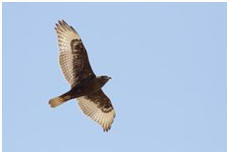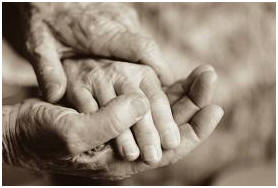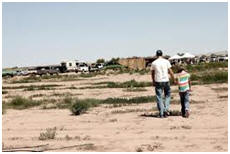|
Traditional peacemaking,
or hózh̨óji
naat’aah,
is one of several traditional services that may be obtained
through the Peacemaking Program.
Procedures to obtain
hózh̨óji
naat’aah
and other services
are set down in Part Three.
If a court order is sought for a dispute,
hózh̨óji
naat’aah
may not be initiated for such a dispute in the Peacemaking
Program. Such
matters need to be first filed in court, and then referred to
hózh̨óji
naat’aah
by the court for all or part of the dispute.
However, Program staff will speak with anyone, at any
stage of any matter, regarding the Program’s other traditional
services, even after adversarial proceedings have already begun.
Participants
There are 4 types of participants in peacemaking:
1.
There is the Peacemaker,
hózh̨ǫ́ójí
naat’áanii.
2.
There are the troubled decision-makers who, because they have
agreed to participate and will ultimately point the way in
grappling with naayéé’,
are called “naałchidí.”
Children may be jointly
naałchidí with their
family members when the family’s joint decision is needed to
change behavior.
3.
There are the family members, workmates, friends or others
affected by the naayéé’
or knowledgeable about the
hóóchx̨o’/anáhóót’i’
who may contribute to the talking-out but do not make the
ultimate decision.
They attend with the permission of the group.
Because of their presence and desire to contribute, they
are called “atah
naaldeehí.”
4.
There are the observers, who attend with the permission of the
group, but may not speak or gesture.
They are called
“ha’a sí dí.”
Hóóchx̨o’/Anáhóót’i’
According to the Journey Narrative, the Holy
People journeyed through four worlds and, in the course of their
journey, came upon many problems both natural and caused by the
Holy People, which had to be resolved before the journey
continued. Chaos of every kind, including poverty, disease,
obsessive thoughts, jealousy, conflict and sadness were
presented to the Diné one by one and most were slayed by the
Twins—Monster
Slayer, Naayéé'’
neizghání, and Born For Water,
Tóbá
jíshchíní.
The different chaos were called
naayéé’, or
“monsters.” Naayéé’
prevents a person from living a full life and is the cause of
chaos within a person and between human beings.
The result is
anáhóót’i’, hóóchx̨o’,
iiná
yisdił, iiná
deeskid (collectively
“hóóchx̨o’/anáhóót’i’”),
“the opposite of harmony, when things are not what they
should be.” All chaos that disrupt inner and outer harmonious
life are still called
naayéé’.
Ours is an ancient culture, tied to the seasons.
We are taught that there are teachings and stories that
can only be told in their season, unless there is
hóóchx̨o’/anáhóót’i’
and dire need. When
individuals seek out peacemaking, they are considered in such
dire need. The
stories may then be used as
na’nitįn.
Some stories are set forth here with that intention.
Often, we find depictions of a Holy Person who had
been honored with the Protection Way, which protects us from
harmful naayéé’.
It is said that the Twins received the Protection Way and
were able to use the way of the reflection, or monster-way,
naayéé’-ee k’ehgo, to
expel naayéé’

The most harmful
naayéé’ that killed
human beings were destroyed by the Twins.
One story begins: Rock Monster Eagle,
Tsé nináhálééh, would swoop down and carry the People off to
feed the nestlings on top of Shiprock,
Tsé Bit'a'í. As the
sun was coming up, Monster Slayer,
Naayéé' neizghání,
ran along the top
of the Continental Divide with the bloody colon of Horned
Monster, Déélgééd,
around his neck and small intestines over his shoulders. He was
seen by Tsé nináhálééh
who flew toward him. He sang out, saying that he was
Naayéé’ neizghání,
coming to kill him.
While most
naayéé’ were destroyed by the Twins,
seven naayéé’
begged to be spared— hunger, lice, sleepiness, poverty,
jealousy, laziness, and anger.
They were spared in exchange for teaching self-discipline
to the People. For
example, hunger was spared to teach strength and fitness, lice
to teach cleanliness and compassion when family members cleaned
each another, and so on.
It is said that the Twins were able to heroically expel
naayéé’ because their
mother, Changing Woman, had protected them from the
naayéé’,
and because her
own childhood had been filled with teachings of the Blessingway,
hózh̨ǫ́ójí,
she could give them her Life-way knowledge of healing, creation,
and harmony.
The Twins were given four names, each reflecting
their development in their life.
Naayéé’ neizghání
is a Protection Way name which is the first name given to them,
they were given the bow and arrow, both called
ałtíí, the arrow
which is the sun’s ray, and the bow which is lightning.
Tóbá
jíshchíní
or Born For Water, the other Twin, was called this because of
the water break during his birth.
Leeyi’ neeyáníi
or Raised Underground is their third name
because their mother had hidden them in a hole in the ground by
day then brought them out by night to learn survival.
Tsoi’naglee
or They Are the Grandchildren is their fourth name.
Changing Woman’s parentage and upbringing had
enabled her to provide the Twins a full understanding of
harmonious life that conditioned them and provided them with
endurance when they battled chaos.
A foundation through stories and teachings to master
harmonious life gives individuals that ability of the Twins to
engage with chaos.
Chaos cannot be returned to a place of harmony if that place is
unfamiliar or unknown and, therefore, without proper value.

Mastery of Hózh̨̨ó
Traditional Diné Peacemaking begins in a place of
chaos, hóóchx̨o’/
anáhóót’i’,
whether within an individual or between human beings.
Perhaps due to
historical trauma, Navajos shy away from face-to-face
confrontations. However, such confrontations are vital in order
to dispel hóóchx̨o’/anáhóót’i’.
The Peacemaker has the courage and skills to provide the
groundwork for the person or group to confront
hóóchx̨o’/anáhóót’i’
and move toward mastering harmonious existence.
Life value engagement with the peacemaker provides the
sense of identity and pride from our cultural foundations.
Hóóchx̨o’/anáhóót’i’
can block and overwhelm clanship,
k’é,
which is normally what binds human beings together in mutual
respect. Through
engagement, the Peacemaker educates, scolds, persuades, pleads
and cajoles the individual or group toward a readiness to open
up, listen, share, and make decisions as a single unit using
k’é.
When hóóchx̨o’/anáhóót’i’
is confronted, people may learn there is a choice to leave it.
When harmony, hózh̨̨ó,
is self-realized, sustaining it will have clarity and permanent
hózh̨̨ó
will be self-attainable,
hózh̨ǫ́ójí
k’ehgo nįná’íldee’ iłhááhodidzaa
ná’oodzíí’.
Through stories and teachings, the Peacemaker
dispenses knowledge, naat'áánii,
in order to guide the whole
toward a cathartic understanding of
hózh̨̨ó
that opens the door to transformative healing.
The flow of hózh̨̨ó
is a movement inwards toward the core issue or underlying truth.
Recognition of this truth and the ending of denial
provide the opportunity for healing or mutual mending.
Realization of the truth occurs when individual feelings
are fundamentally satisfied. The
resolution of damaged feelings is the core material of
peacemaking sessions,
hózh̨óji
naat’aah.
Depending on the skill of the Peacemaker,
hózh̨̨ó
may be short or may take several peacemaking sessions.

Hózh̨ǫ́ójí
Naat’áanii,
the Peacemaker
“Peacemaker” is a loose and inaccurate
translation of hózh̨ǫ́ójí
naat’áanii
which more precisely means a combination of leader, teacher and
healer. Unlike a
western-style mediator who is expected to be an impartial
referee, the hózh̨ǫ́ójí
naat’áanii’s
role is to bring the people out of chaos into
hózh̨̨ó
by using stories and teachings to enable them to resolve the
problem and decide on mutual positive action.
Hózh̨ǫ́ójí
naat’áanii
gently leads in the direction of transformative healing.
As a leader,
hózh̨ǫ́ójí
naat’áanii
needs to have the insight and leadership qualities necessary to
help in peeling away layers of denial and distortion that
frequently characterize domestic chaos.
Unlike a mediator,
hózh̨ǫ́ójí
naat’áanii
is an engaged part of the dispute resolution course, signifying
the weight of tradition and timelessness in the healing process.
Hózh̨ǫ́ójí
naat’áanii
scolds, persuades, pleads, cajoles and educates everyone, using
stories, to fully
talk out their problems, in order to reach their mutual decision
for the good of the whole.
They are guides and educators.
Hózh̨ǫ́ójí
naat’áanii
are the keepers of the peacemaking method,
hózh̨óji
naat’aah,
serving as guides from
hóóchx̨o’/anáhóót’i’
through self-realization to
hózh̨̨ó.
It is for this service that community-based peacemakers
are due a fee. Peacemakers who are full-time Program staff are
not paid yeel.
The peacemaker fee is called
yeel.
Yeel is collected and paid through the Program to
community-based peacemakers.
Yeel collected is at
a set fee regardless of length of a session and may be paid for
participants by the Program, subject to availability of funds,
in family preservation and reunification matters when
naałchidí are
indigent, or in matters involving children who are alleged to
have violated the Álchíní Bi Beehaz’áannii Act,
whether or not charges have been court-filed.
Origins
The journey of peacemaking from chaos to
hózh̨̨ó
has roots that go far back to our history.
A word often used aspirationally is
naachid, which
is a complex word, meaning many things.
Naachid
means “using the finger to point with confidence.”
It is a noun, meaning the person speaking for the group,
the person with the plan, the person who points to a direction,
and finally, the relationship between the planner and the people
for whom the plan is intended. When talking to his tribe,
Chief Manuelito would point with his finger, and his gesture
would mean, “This is what I want you to hear about the direction
we are taking,” kodóó
shigaan k’eh dídóoh’įįł.
It has sacred meanings.
It is engagement in which
hóóchx̨o’/anáhóót’i’
is confronted by leaders,
naat’áanii,
who bring in skills to the
naachid. The
winter ceremony in which our tribal congress gathered to ask
favors and questions of the Holy Ones was called
Naachid.
It is also the twelve war chiefs representing the clans
who would make decisions in the presence of the whole tribe in
time of war; and the twelve peace chiefs who would also meet in
this way to resolve
anáhóót’i’
in times of peace. The entire tribe would speak, and leave the
solution in the hands of our learned elders.
When a group is in chaos, the tribal congress of
naachid is recalled
as an example of how the individual or family could aspire to
function and achieve
hózh̨̨ó
for the good of all.
The family or group members are normally not
naat’áaniis, and
often not knowledgeable about
hózh̨̨ó,
or are so deeply embroiled in
hóóchx̨o’/anáhóót’i’
as to need assistance to regain their sense of
hózh̨̨ó.
With the guidance of peacemakers, they can aspire to the
quality of naachid to
journey out of
hóóchx̨o’/anáhóót’i’
and decide on solutions that would return the unit, and
therefore the whole community, from
hóóchx̨o’/anáhóót’i’
to
hózh̨̨ó.
The participants in
peacemaking
are, themselves, embroiled in the chaos and therefore are not
impartial decision-makers such as judges.
Being troubled themselves, they are lacking in
hózh̨̨ó,
therefore are not naat’áanii
like those in the
naachid. They
are students, learning from the Peacemaker.
However, they have agreed to participate in
hózh̨óji
naat’aah,
and are considered potentially heroic.
Through hózh̨óji
naat’aah
they may rise from the darkness of
hóóchx̨o’/anáhóót’i’
and reach a spiritual place by which a wise decision can be made
that will return peace to their unit, which will positively
affect the whole community and also lift the entire tribe.
Therefore, they are on a heroic journey following the
example of the Twins.
Their potential heroism in pointing the way for their
families in the slaying of their
naayéé is
acknowledged through the name that is given to them in
present-day hózh̨óji
naat’aah,
which is ”naałchidí.”
Nályééh,
K’é ná’ásdlįį,
K’é níjísdlįį,
K’eedí’nééh
When individuals have suffered losses and approach a
modern court for
ways to recoup their losses, the obligation of the court would
normally be to
calculate tangible and/or intangible losses and provide a
vehicle for reparations for some or all of those losses to be
made to the harmed or damaged party.
The word nályééh
has been used by our courts to describe these reparations
and damages.
However, like very many Navajo words translated into English,
the above use of nályééh
is far from its root meaning, and certainly very far from
how nályééh is used
in peacemaking. Nályééh
in peacemaking is used with
k’é ná’ásdlįį
and k’é níjísdlįį
which mean gestures of peaceful engagement toward
reconciliation.
Actual words of apologies may never be spoken.
Nályééh means
reparations but never damages when used traditionally.
It is sometimes said that
hózh̨̨ó
is restored through
nályééh. The gestures of
nályééh, k’é ná’ásdlįį,
k’é níjísdlįį and
k’eedí’nééh
are made when people engage each other.
They are the process of turning a negative to a positive.
It is the achievement of the positive result of
hózh̨̨ó.
And, it is what is given to heal and adjust the relationship.
Laying blame plays no part in
nályééh and apologies
are not normally made.
It is not uncommon to have gestures of
nályééh, k’é ná’ásdlįį,
k’é níjísdlįį, k’eedí’nééh
by both sides.
In a recent example, two uncles of a Peacemaking Program
staff had a long-standing quarrel.
Disrespectful words had been spoken and there were hurt
feelings. Then one
day, one of the uncles approached the other and placed a
turquoise necklace over his head, and said, “Thank you for being
my brother.” The next day, the uncle who received the necklace
brought a horse to the other uncle and said, “Thank you for
being my brother.”
In their gestures were acknowledgements, with no words needing
to be spoken, that each has contributed to
hóóchx̨o’/anáhóót’i’
and each had
personal responsibility to restore
hózh̨̨ó.
No words of apologies or
forgiveness were needed to be exchanged. The gestures of gifts
and conciliatory words, and the manner in which they approached
one another, are all
nályééh, k’é ná’ásdlįį,
k’é níjísdlįį, k’eedí’nééh.

Lasting Healing, sa’ąh
naaghéí bik’eh hózhóón
níjísdl
̨į́í’
People possess power that affects others. If we
are to be healed, we will need to perceive and understand these
effects.
Hózh̨̨ó
allows for this understanding to occur.
Most importantly, the process catharsis occurs through
the self without external coercion. The teaching is neither pain
nor deprivation, nor is it something heard that is not inwardly
realized. It is self-realization and it is through this process
that both the offender and the victim can experience enduring
healing and get on with their daily life challenges with a
stronger and more integrated sense of self.
A person with this strength and respect for his clan is
able to contribute to restore
hózh̨̨ó.
Navajo common law does not label individuals
“offender” and “victim,”or as wrongdoer and harmed party. There
is the sense that all who are embroiled in
hóóchx̨o’/anáhóót’i’
possess some qualities of causing the offense or being the
victim. The reason
for conflict or violence created by one person on another will
ultimately be understood in
hózh̨̨ó.
Hozh̨ǫ̨̨̨̨̨̨́ogo
naasháadoo
(may I walk-in peace);
Hózh̨ǫ́ójíí
saad bee ałch’i’ yádeilti’’doo
(may we communicate in peace).
Lasting healing is included in blessings,
hózh̨ó
náhásdlįį’,
sa’ąh naaghéí bik’eh hózhóón níjísdl íí’.
Consent
Peacemaking is consensual insofar as people in chaos
agree to participate.
Unlike western jurisprudence where feelings are viewed as
unreliable guides to justice attainment, peacemaking requires a
focus on feelings in order to foster authentic and enduring
hózh̨̨ó.
People in conflict are typically angry, and through the
peacemaking process, when their feelings are satisfied, are able
to settle down.
Since feelings take time to be addressed, it would be incorrect
to think that Peacemaking only handles cases where
hózh̨̨ó
is desired at the outset.
Consent is shown by participation.
Often, negative thoughts
are present. By
their consent the people agree to fully address their negative
thoughts within the peacemaking and explore turning the negative
into positive, and the negative may then become a lesson
learned. In most
cases when
hózh̨óji
naat’aah
is begun through the Peacemaking Program,
this consent will need to be written down.
Process of Learning
Peacemaking is a process of learning, talking things out,
catharsis upon reaching core truths, and healing.
It may include individual or group dynamic life value
engagements in which teachings can be shared.
A session would begin with an opening prayer,
introductions, instructions, stating the
hóóchx̨o’/
anáhóót’i’,
discussion of hóóchx̨o’/anáhóót’i’,
further life value engagement, catharsis and opening up to
hózh̨̨ó,
acceptance of hózh̨̨ó,
discussion of nályééh,
and closing prayer often accompanied by everyone eating
together.
The life value engagement portion of peacemaking is
perhaps the most important.
It is a dynamic dialogue where
hóóchx̨o’/anáhóót’i’,
through the lens of stories and teachings, takes on an emotional
shape and is released. The intensity of the engagement allows an
individual to self-realize the teachings, and frequently
precedes successful peacemaking outcomes in deeply conflicted
situations.
All those affected, including victims, participate.
With all of us together,
t’áá
áníiltsxo
ahił ká’iijée’go,
mutual decisions to embrace
hózh̨̨ó
and decide on nályééh
can be made by the
naałchidí who give their sacred word,
hazaad jidisingo,
that they will abide by the group’s outcome.
The outcome, reached through the values and principles of
the Fundamental Law, Diné
be beenahaz’áanii,
achieves harmony, bee
hózh̨ó
náhoodleeł.
Finality is established when
hóóchx̨o’/anáhóót’i’
is expelled by their agreement,
ná bináheezláago bee t’áá
łahj̨̨̨i'ałgha’
deet’̨á.
Ceremonies
Ceremonies in which
na’nitįn, prayers,
songs, and offerings are included are often used before or at
the close of a peacemaking.
Through the ceremonies, we learn that we exist within the
universe with Mother Earth and Father Sky.
The ceremonies are holistic, and connect a person to the
elements, the seasons, the environment, and the heavenly bodies.
Ceremonies and the Medicine people are the peacemakers
between Mother Earth, Father Sky, the natural order of existence
and the earth surface people in
Nohookáá' Diyin Dine'é
(Holy People) /
Bíla'ashdla'ii (Five-Fingered People).
Nohookáá' Diyin Dine'é
are sensitive to the positive way of life that is
Sa'̨ah
Naghéí
Bik'eh Hózhóón.
As we co-exist with the universe, we learn the principles
necessary to live within the natural order, which means
respecting ourselves as well as the environment. We learn
the importance and sacredness of wind, water, air, plants,
animals and ourselves, largely absent from Western-style
education.
Food
Traditionally, food would be served at the successful
conclusion of a peacemaking.
When participants eat together upon reaching an
agreement, eating together solidifies the agreement and
emphasizes the communal outcome. While the Program cannot
arrange for meals, participants are encouraged to address the
serving of food and drink themselves.
Principles in the Conduct of
Hózh̨óji Naat’aah
The principles of Diné bi
beenahaz’áanii
applicable for the conduct of a peacemaking session are complex
and voluminous in that they are the value structure of a way of
life. The
explanation of many of these principles are contained in the
Program’s written syllabus and also verbally conveyed.
|